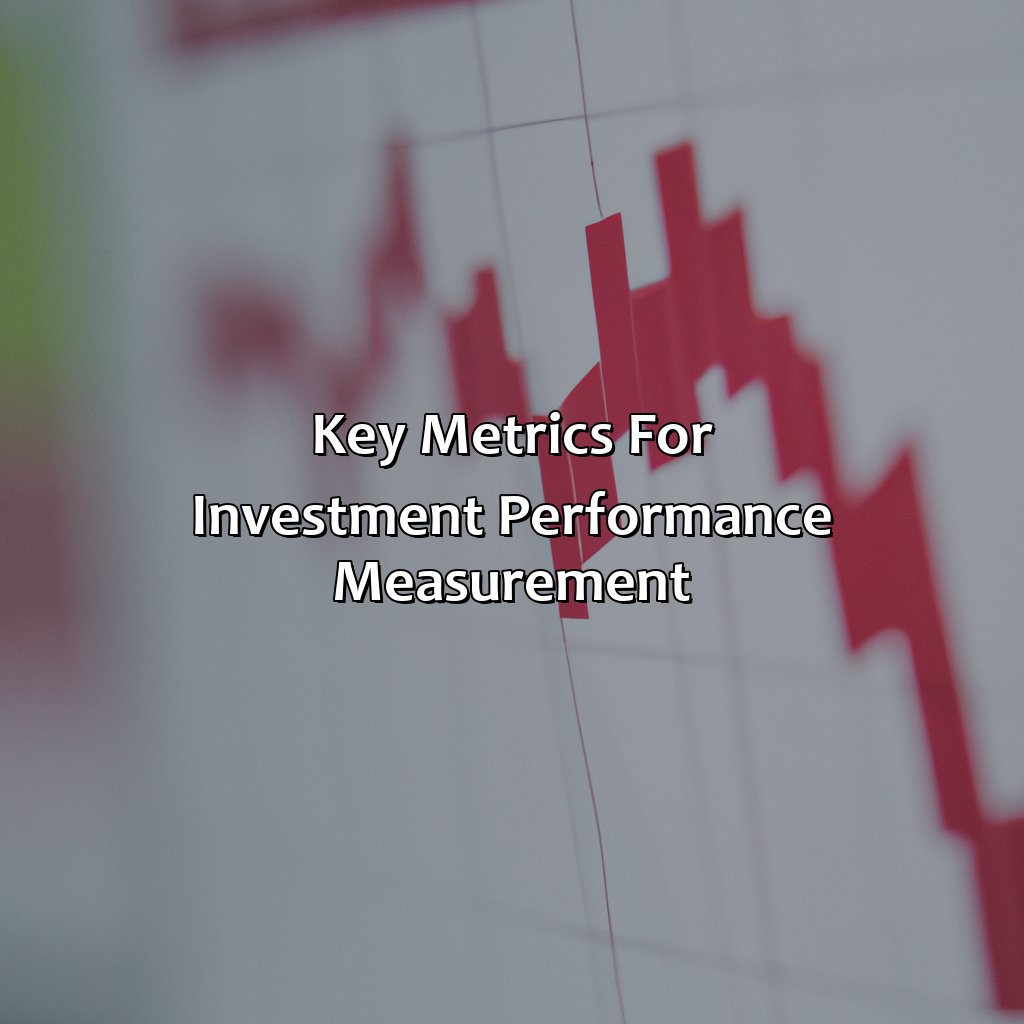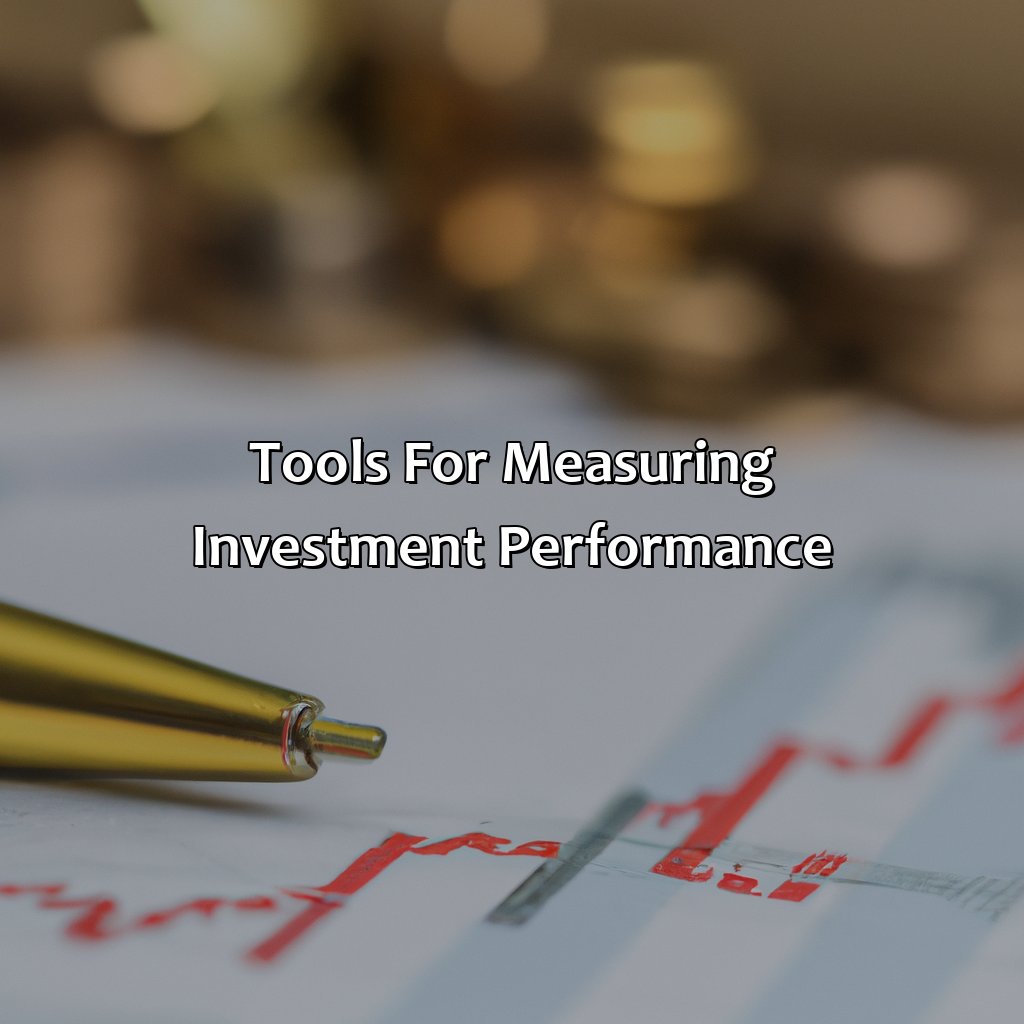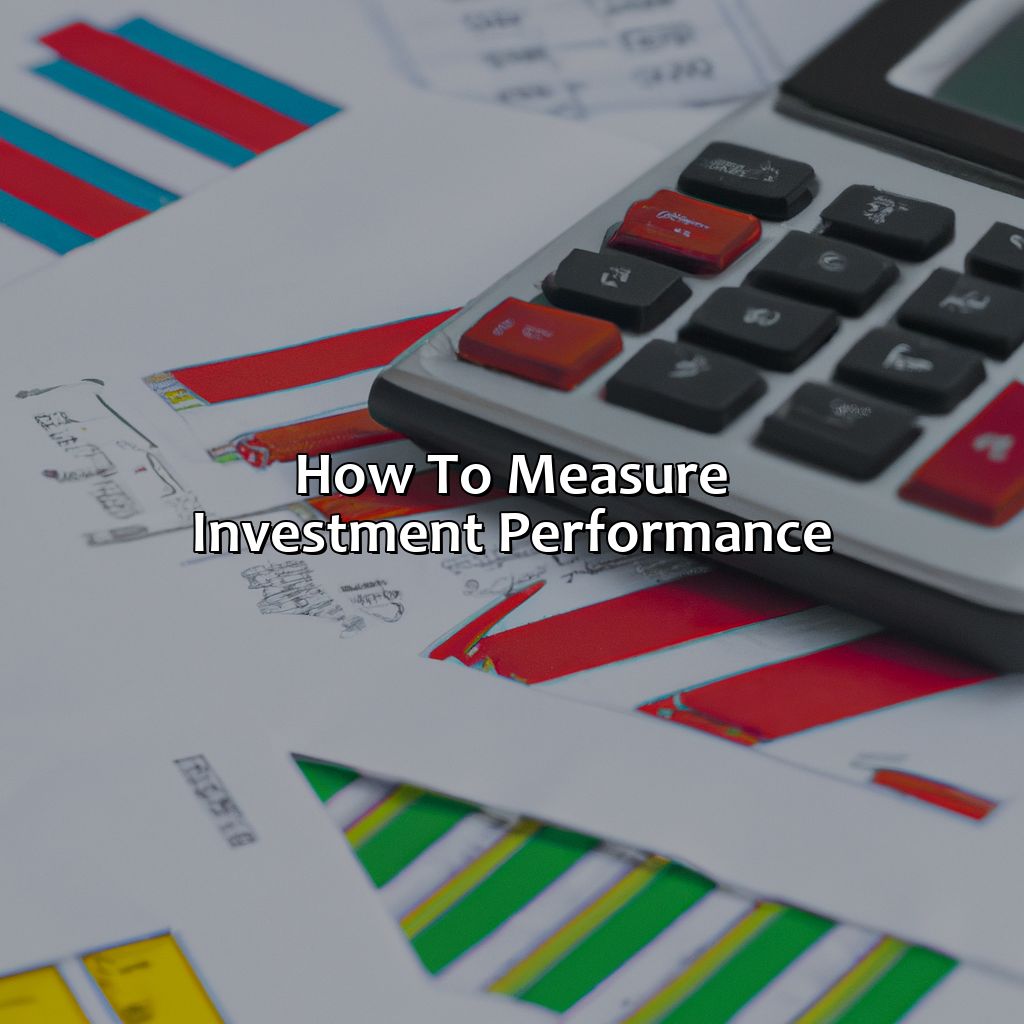How To Measure Investment Performance?
Key Takeaways:
- Measuring investment performance is essential for evaluating investment success, and it involves analyzing key metrics such as ROI, RAR, volatility, beta, Sharpe ratio, and Treynor ratio, to make informed investment decisions.
- Tools such as standard deviation, benchmarking, and portfolio analysis can help investors measure their investment performance and compare their results to industry benchmarks.
- By measuring investment performance, investors can identify areas where they could improve and adjust their investment strategy accordingly to achieve better results and meet their financial goals.
Do you ever feel overwhelmed by the amount of investment options available? Measuring performance is a key step in understanding where to invest. Learn how to make an informed decision and maximize your investment potential with our comprehensive guide.
Key Metrics for investment performance measurement
Want to measure your investment performance? You’ll need key metrics! Learning about “Return on Investment (ROI)”, “Risk-Adjusted Return on Investment (RAR)”, “Volatility”, “Beta”, “Sharpe Ratio” and “Treynor Ratio” found in the “Key Metrics for investment performance measurement” section can be a great solution. Gaining insights from these sub-sections can help you make wise investment decisions!

Image credits: retiregenz.com by Yuval Arnold
Return on Investment (ROI)
Investment returns are the financial earnings generated from investing funds. Investors receive returns on their investments through various channels, depending on the type of investment. These channels could be through dividend payments, capital appreciation, or coupon payments.
The benefits and drawbacks of various investments can be understood by using an appropriate variation of Return on Investment (ROI).
Investors seek high ROI as it indicates that they are generating higher earnings. Additionally, ROI can assist in effectively measuring the performance of investments. The ROI is calculated by subtracting the cost of investment from the total amount earned from investment and then dividing this number by the cost of investment.
The ultimate goal of investors is to maximize returns with lower risk levels. It’s essential to evaluate whether ROI includes all costs associated with an investment to measure its performance accurately.
Historically, return measures have been useful, commonly used tools for assessing portfolio performances. Evaluating diverse asset classes such as stocks and bonds historically utilized techniques like Return on Investment (ROI) measurements to compare a portfolio’s past results against other market benchmarks over different time frames.
It’s critical for investors not only to understand how to calculate ROI accurately but also to keep in mind if there are any underlying risks associated with an investment before investing their hard-earned money.
Calculating risk-adjusted returns is like putting a seatbelt on your investments – it’s important to protect them from potential crashes.
Risk-Adjusted Return on Investment (RAR)
Investment performance evaluation can be tricky, as straight-up returns alone do not give an accurate picture. Risk-Adjusted Return on Investment (RAR) assesses returns in light of the risk taken to generate them. A high RAR indicates superior performance and is a crucial metric for investors seeking to balance risk and reward.
To calculate RAR, one commonly used formula is Sharpe Ratio, which examines excess returns (returns over benchmark) relative to volatility. It permits the investor to compare investments with differing risks against a consistent measure, factoring in the adverse impact of excessive risk-taking.
Other frequently used formulas include Sortino Ratio, which looks at downside volatility and Calmar Ratio, which adds maximum drawdowns to the equation. However, it is critical to recognize that each formula has its strengths and weaknesses and should be used correctly based on investors’ preferences or goals.
Pro Tip: Remember that sound investment portfolio management combines multiple perspectives when assessing performance measures like RAR. Individual metrics alone cannot provide complete insight into portfolio strategy success or failure.
Why settle for a rollercoaster when you can experience the same thrill through investment volatility?
Volatility
Investment performance can be measured using various key metrics, and one of the important aspects among them is the level of unpredictability in its returns. Simply put, the amount of risk or uncertainty associated with the investment’s returns due to market fluctuations is known as ‘Fluctuation’ or ‘Variability’.
The measure of this fluctuation is referred to as ‘Volatility‘, which provides insights into how much variability investors may expect in their returns over a given timeframe. Higher volatility implies greater potential for quick gains or losses, whereas lower volatility suggests relatively stable progress over time. Thus, understanding volatility is a crucial factor for investors in assessing their portfolio’s overall risk exposure.
It’s worth noting that volatility isn’t synonymous with risk itself; rather, it reflects an investment’s innate nature to varying degrees of change over time. Furthermore, identifying potential sources of volatility and managing them effectively are essential strategies for minimizing adverse impacts on returns.
Thus, it’s essential for savvy investors to keep track of volatility levels in their investment portfolios regularly and use them to inform their decision-making process moving forward – after all, not staying abreast with market trends might lead to a missed opportunity down the road. Remember – knowledge is power when it comes to investing!
Looking for some volatility in your life? Beta’s got you covered.
Beta
Tracking the market volatility with an investment is important. One way to do this is by measuring its responsiveness to changes in the market. This metric, known as Beta Equivalent, helps investors identify the risk associated with individual investments.
Beta equivalent measures how sensitive an investment is to changes in the market. By tracking an investment’s beta equivalent, investors can gauge whether it performs better or worse than the overall market.
Moreover, Beta Equivalent is a crucial metric in understanding an investment’s performance because it enables investors to make informed decisions about allocating or rebalancing their investments.
Pro Tip: One important thing to keep in mind while using Beta Equivalent is that it should not be used alone but should be paired with other performance metrics for a more thorough analysis of investment performances.
Why settle for eating crumbs when you can have a Sharpe Ratio for dessert?
Sharpe Ratio
Measuring investment performance involves various metrics, including a statistical ratio that is widely used by investors known as the Reward-to-Volatility Ratio. The Sharpe Ratio primarily gauges a portfolio’s returns on a risk-adjusted basis. It measures the excess return per unit of risk, with higher ratios being desirable.
Investment managers use the Sharpe Ratio because it provides additional insight into their investment strategy’s risk-adjusted return performance. Investors typically look for well-performing portfolios with low volatility, and this ratio suffices as a gauge to differentiate between similar investments. By comparing both, investors can determine which portfolio carries less risk while delivering high returns.
The Sharpe Ratio has its limitations. One major drawback is its reliance on historical data, which doesn’t always predict future performance trends accurately. That said, investors should use it along with other performance evaluation metrics to gain a much better grasp of an asset’s risks and rewards.
To improve the Sharpe Ratio results of any given portfolio, prioritize diversification and avoid over-concentrating on one security or sector. Also worth considering are highly liquid securities with low correlation coefficients to spread out overall risks further. Ultimately, optimizing the risk-return tradeoff will positively influence portfolios’ reward-to-volatility ratios without increasing unnecessary risks.
The Treynor Ratio: Like a self-defense class for your portfolio, measuring risk-adjusted returns to keep your investments safe from market bullies.
Treynor Ratio
The measure of excess return earned per unit risk is denoted as Sharpe Ratio. Let’s now understand another metric that comes under the key metrics for investment performance measurement – the Risk-Adjusted Return or ‘Treynor Ratio’.
In a table below, Treynor ratio is calculated:
| Fund Name | Annual Return (%) | Beta (systematic risk) | Treynor Ratio |
|---|---|---|---|
| Fund A | 8% | 1.2 | 5.33 |
| Fund B | 12% | 0.9 | 11.11 |
| Fund C | 10% | 1 | 8.57 |
Meaning of each column in the table can be deciphered from it, but for better understanding, the annual return represents the percentage of growth or decline in net asset value (NAV), beta indicates systematic risk associated with market alpha, and Treynor ratio exhibits how efficiently funds use their systematic risks to generate returns.
It is important to note that a fund with a higher value of Treynor ratio implies higher returns per unit systematic/market risk taken by the investor while investing in that particular fund.
Investors should not blindly rely on all these metrics solely to make an investment decision and should assess other parameters such as the performance history of fund managers before choosing any investment avenue.
As per Morningstar portfolio expert Amy Arnott, “When selecting funds or analyzing a portfolio, various performance measures offer different insights… investors must combine analysis methods to get maximum benefit.”
Want to measure your investment performance? It’s like trying to measure a ghost with a ruler – you need the right tools for the job.
Tools for measuring investment performance
Analyzing investments? Powerful tools are needed! Standard Deviation, Benchmarking, and Portfolio Analysis are three of them. Each offers unique insights. Get accurate measurements of your investment performance with these solutions!

Image credits: retiregenz.com by Joel Washington
Standard Deviation
The investment industry commonly uses the measurement of volatility to assess risk. This metric is known as Volatility or VQ. It is measured using the standard deviation of an investment’s returns over a set period, typically annually. Standard Deviation exposes how widely distributed returns are around their average return. A lower Standard Deviation indicates that returns will not fluctuate considerably, whereas a higher correlation indicates that returns are more variable and unpredictable.
A low Standard Deviation implies lower volatility, making it an attractive investment since expected returns are not anticipated to decline sharply anytime soon. Conversely, investors should be cautious when investing in products with greater Standard Deviations because of the possibility of large price swings in either direction.
It should be noted that while the calculation appears straightforward, it can easily mislead investors because it fails to consider whether the distribution of results is normal or skewed.
Investors may aim for a lower Standard Deviation by diversification into heterogeneous asset classes with different market profiles. When combined into one portfolio, asset categories may complement each other’s strengths and weaknesses and provide improved performance stability over time. Investors should take caution as past performance does not guarantee future returns.
Adopting a long-term investment strategy that accounts for portfolio rebalancing on occasion might help smooth out fluctuations in performance over time. Rebalancing entails returning the composition of your portfolio back to your preferred target allocation periodically; it can avoid weaknesses from becoming glaring problems and ensure your investment approach stays consistent with your long-term objectives.
If you’re not benchmarking your investments, it’s like driving blindfolded – you might get lucky, but more likely you’ll crash and burn.
Benchmarking
One way to gauge investment performance is by comparing it with a standard. This practice is known as benchmarking. It helps investors understand the progress of their portfolio relative to the market or a specific index. The comparison should consider various factors such as risk tolerance, investment objectives, and asset allocation.
A benchmark serves as a reference point to assess the returns and risks associated with an investment. Analyzing the performance data against chosen benchmarks provides insight into how well or poorly individual investments are performing compared to the market standards. The benchmark can be selected based on the type of investment strategy the investor has chosen.
Investors need to evaluate how closely their portfolio aligns with their benchmark’s asset composition and holdings. If there are significant discrepancies, investors may decide to adjust their portfolios accordingly. They could also consider selecting alternate benchmarks if they feel that their initial selection no longer represents their investment goals.
Pro Tip: Choose a benchmark that aligns with your goal and sticks to it over time, and avoid frequent changes that can erode long-term returns.
You can’t judge a portfolio by its cover, but you can analyze it to see if it’s worth keeping around.
Portfolio Analysis
Utilizing effective investment strategies involves understanding the analysis of diverse portfolios. To delve deeper into the subject, here is a comprehensive analysis of different investment portfolios and their corresponding performances.
| Portfolio Type | Risk Level | Return Percentage |
|---|---|---|
| Growth Portfolio | High Risk | 8-12% |
| Income Portfolio | Low Risk | 2-5% |
| Mixed Portfolio | Moderate Risk | 5-8% |
A crucial factor when measuring performance is balancing risk against return. This can be carried out by examining various aspects like income assets in comparison to growth assets, the portfolio’s expectations and individual objectives.
In the past years, portfolio analysis has evolved from being simply done manually to where it is today. Modern-day technology advancements have made constant reviews and evaluations possible while offering suggestions for potential changes that could positively affect investments.
Investment performance measurement over time helps evaluate any asset management strategy by comparing returns to competitors or market conditions. By consistently monitoring investments through dynamic tools and techniques, attainment of an informative assessment becomes more likely.
What’s the point of making investments if you can’t measure the success? It’s like buying a gym membership and never checking if you’re losing weight.
Importance of measuring investment performance
Investment performance measurement is crucial for assessing the returns generated from investments. Measuring investment performance helps investors to evaluate their investment decisions and to identify areas of improvement. By analyzing investment performance, investors can make informed and effective decisions and optimize their investments for future growth.
It is essential to measure investment performance regularly using different techniques such as total return, risk-adjusted return, and benchmarking. Total return considers both the capital gains and income generated from an investment, while risk-adjusted return measures an investment’s performance relative to its risk. Benchmarking compares the performance of an investment with the performance of a related market index.
To ensure accurate measurement and analysis of investment performance, investors should use consistent and reliable data sources, transparent methodologies, and appropriate benchmarks. It is also important to consider the impact of taxes, fees, and inflation on investment returns.
Pro Tip: While measuring investment performance, it is vital to focus on long-term results rather than short-term fluctuations. By monitoring and adjusting investment performance regularly, investors can achieve their financial goals and secure their financial future.

Image credits: retiregenz.com by Adam Jones
Five Facts About How To Measure Investment Performance:
- ✅ One way to measure investment performance is by calculating the total return, which includes both capital gains and dividends. (Source: Investopedia)
- ✅ Another way to measure investment performance is by comparing it to a benchmark index, such as the S&P 500. (Source: The Balance)
- ✅ Risk-adjusted returns are a more accurate way to measure investment performance, as they take into account the level of risk taken to achieve the returns. (Source: Forbes)
- ✅ Investment performance can also be measured by analyzing financial ratios, such as price-to-earnings ratio and return on equity. (Source: Motley Fool)
- ✅ It is important to consider the time horizon and investment goals when measuring investment performance, as short-term fluctuations may not accurately reflect long-term performance. (Source: CNBC)
FAQs about How To Measure Investment Performance?
What is investment performance and how is it measured?
Investment performance refers to the return generated by an investment over a specific period of time. It is measured by calculating the percentage change in the value of the investment from the beginning of the period to the end of the period, including any income generated by the investment during that time.
What are the most common measures for investment performance?
The most common measures for investment performance include the total return, annualized rate of return, and compound annual growth rate (CAGR). These measures are used to assess the investment’s performance over a specific period, adjust for the time value of money, and provide a long-term view of the investment’s growth rate.
What factors affect investment performance?
The performance of an investment is affected by several factors, including market conditions, economic indicators, company earnings and growth prospects, interest rates, and inflation. These factors can impact the investment’s returns positively or negatively, depending on the investment type and its exposure to the different market conditions.
What is the difference between absolute and relative investment performance?
Absolute investment performance measures the actual return generated by an investment over a given period, while relative investment performance compares the investment’s return to a benchmark or index in the same period. Relative performance is a more ideal measure for assessing investment performance, as it is more relevant to the investment’s objectives and provides a point of comparison to other investments in the same market.
How do I evaluate my investment’s performance over different periods?
To evaluate your investment’s performance over different periods, you need to calculate the total return for each period, adjust for inflation, and compare the performance of the investment to a relevant benchmark or index. It is also important to consider the investment strategy, risk tolerance, and diversification when assessing the investment’s performance over different periods.
What are the limitations of using past performance to predict future investment performance?
Past performance is not a reliable predictor of future investment performance, as market conditions, economic indicators, and other factors can change significantly over time. Additionally, the investment strategy, risk tolerance, and diversification of the investment can impact its future performance. Investors should always consider a range of factors when assessing an investment’s potential performance.


